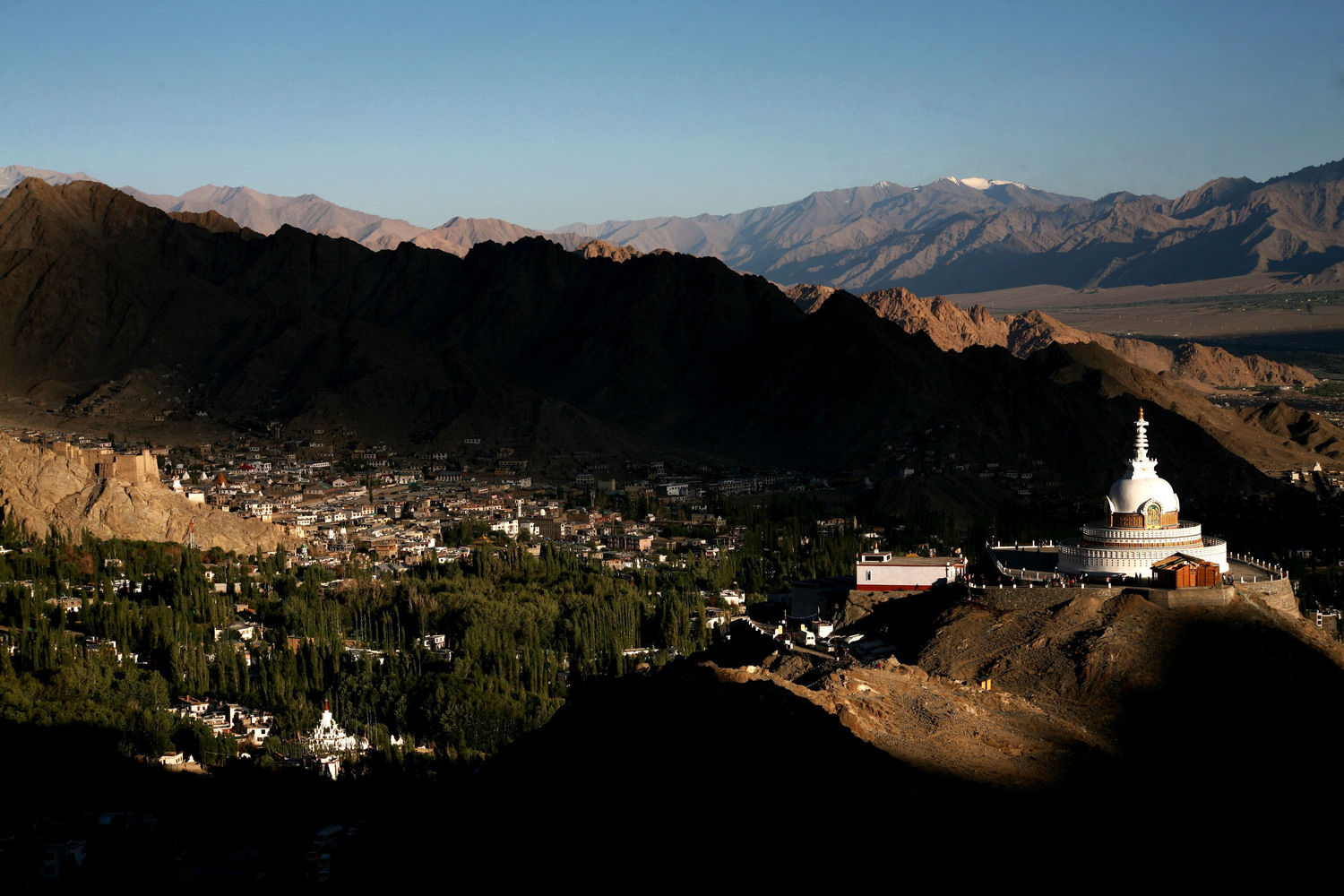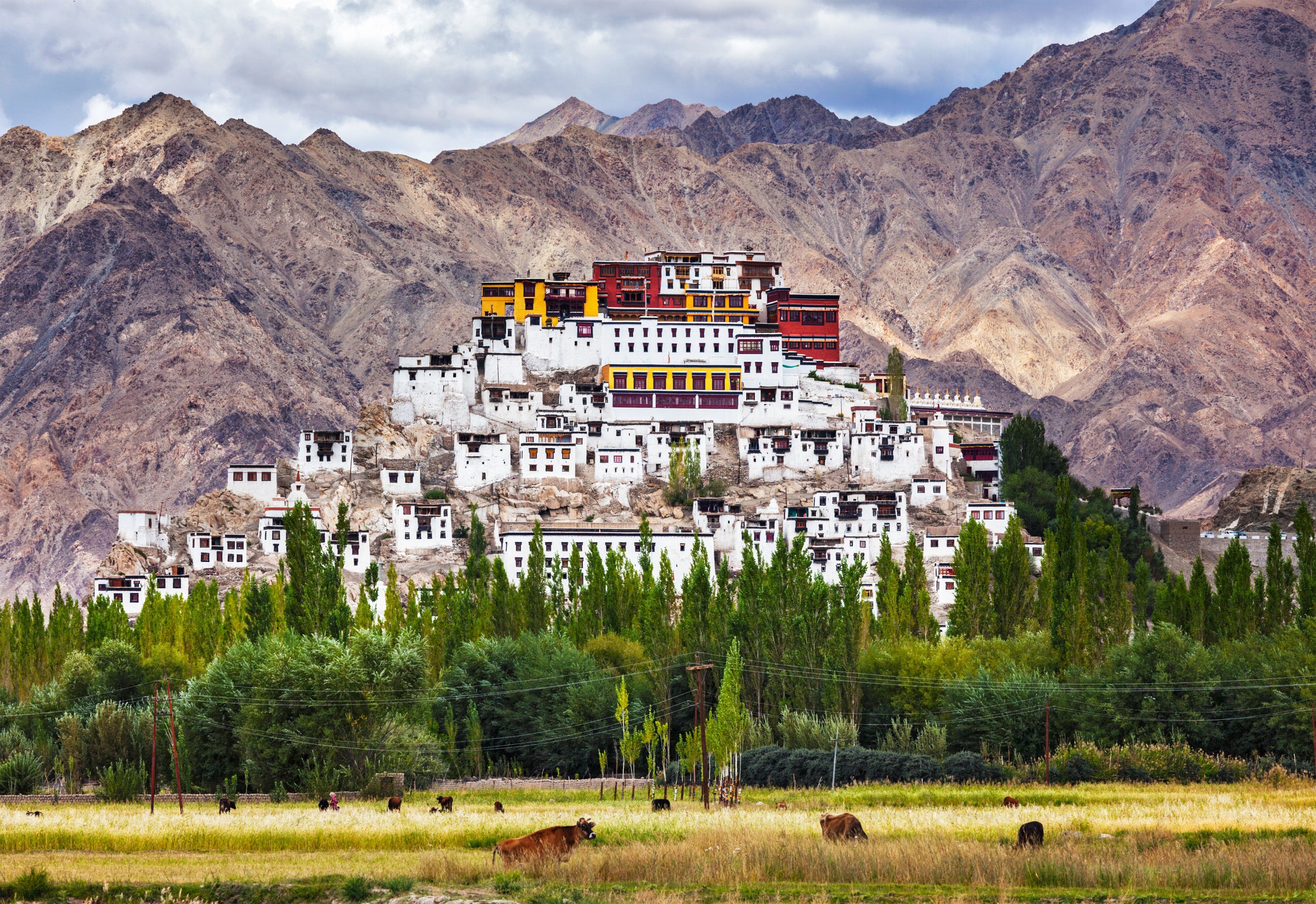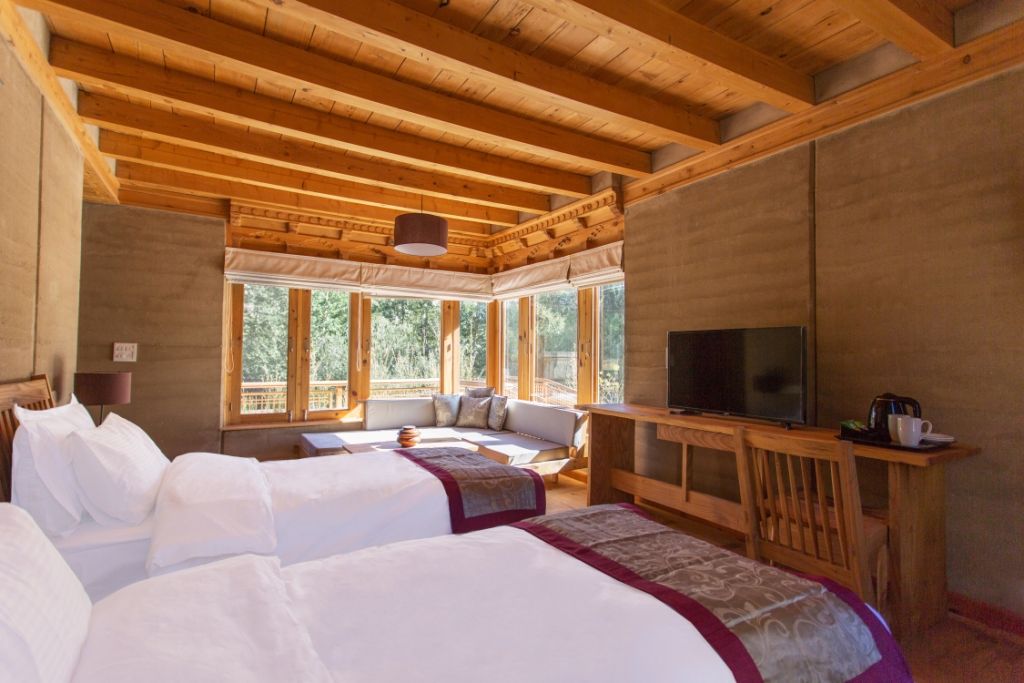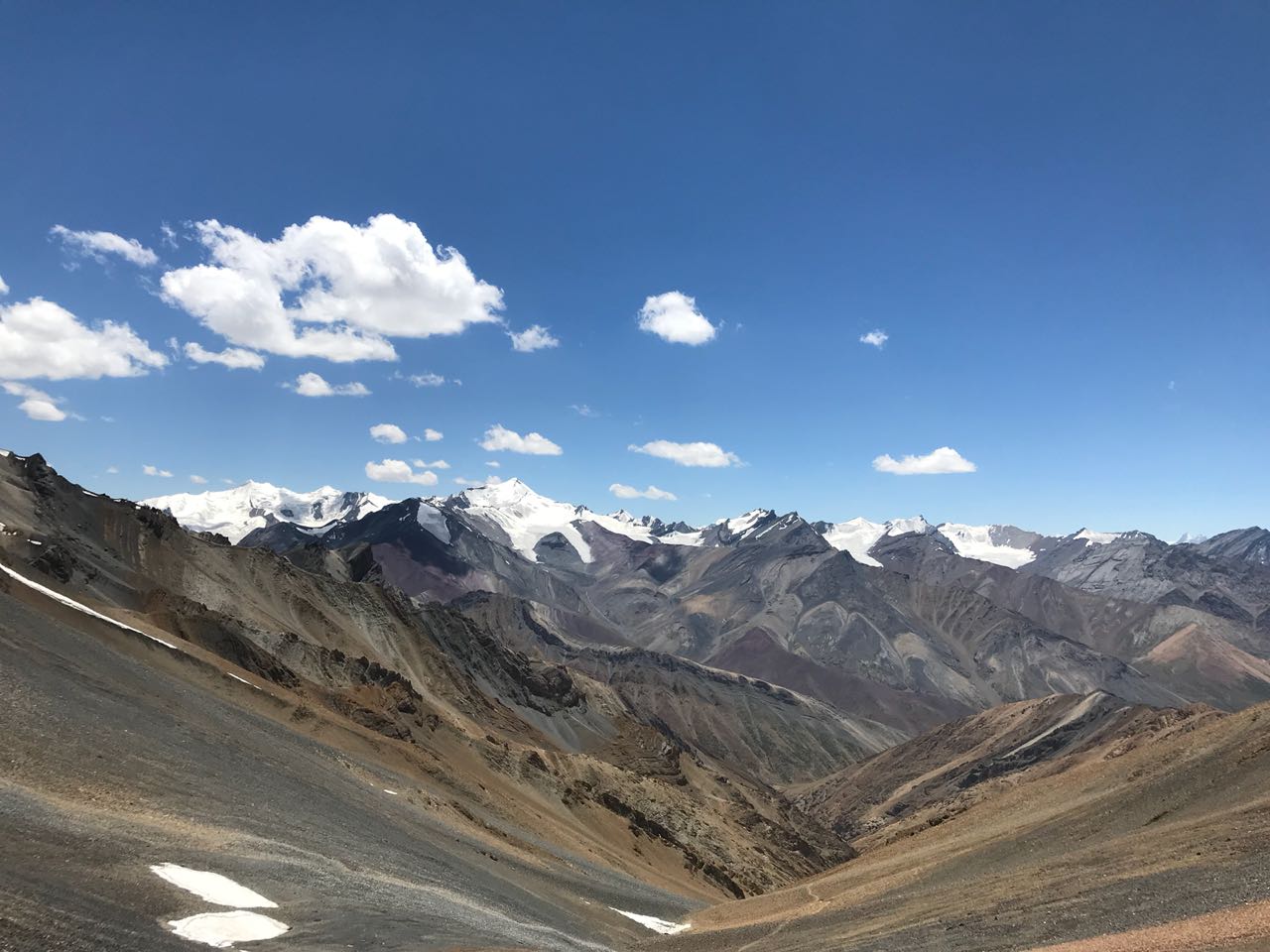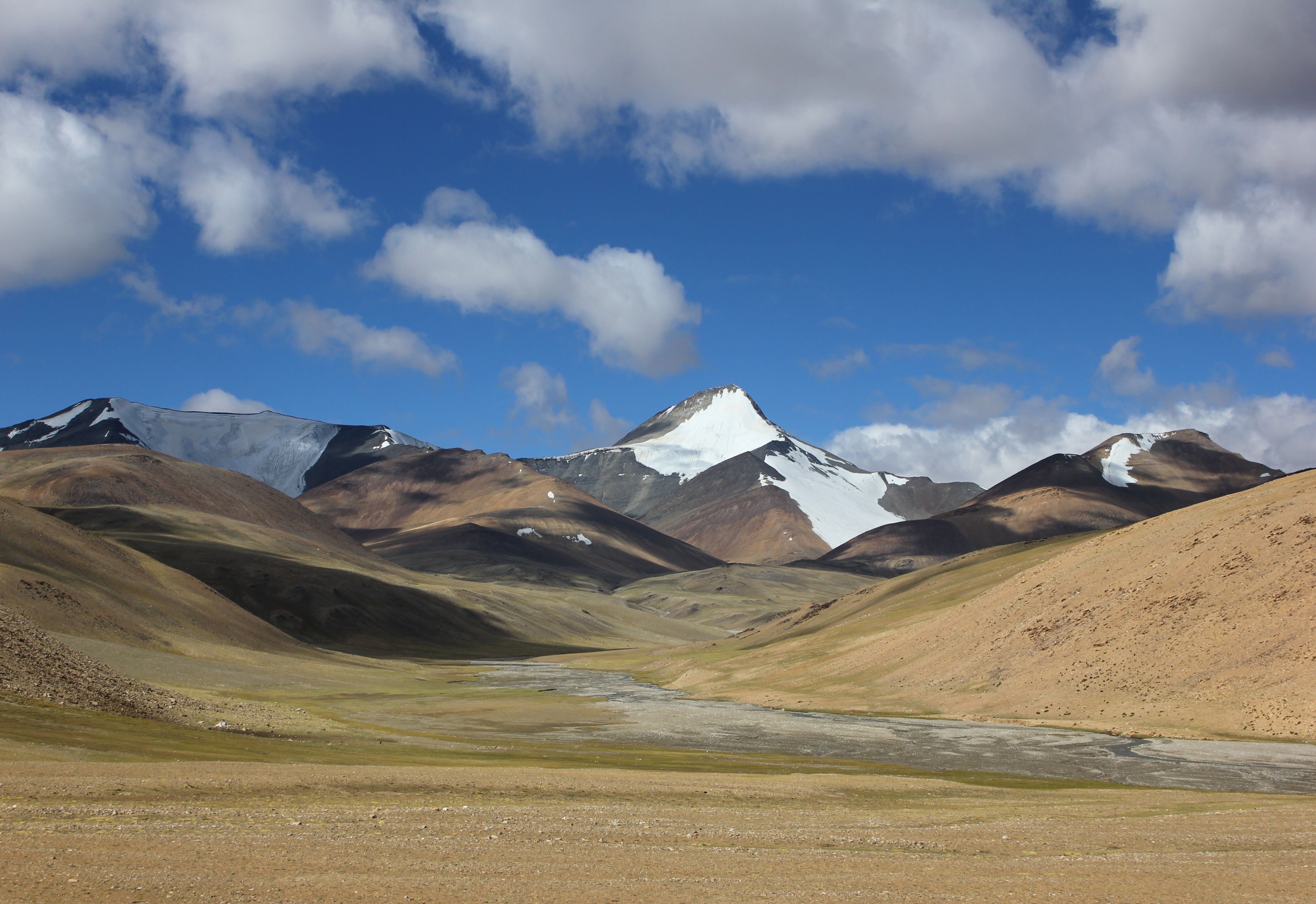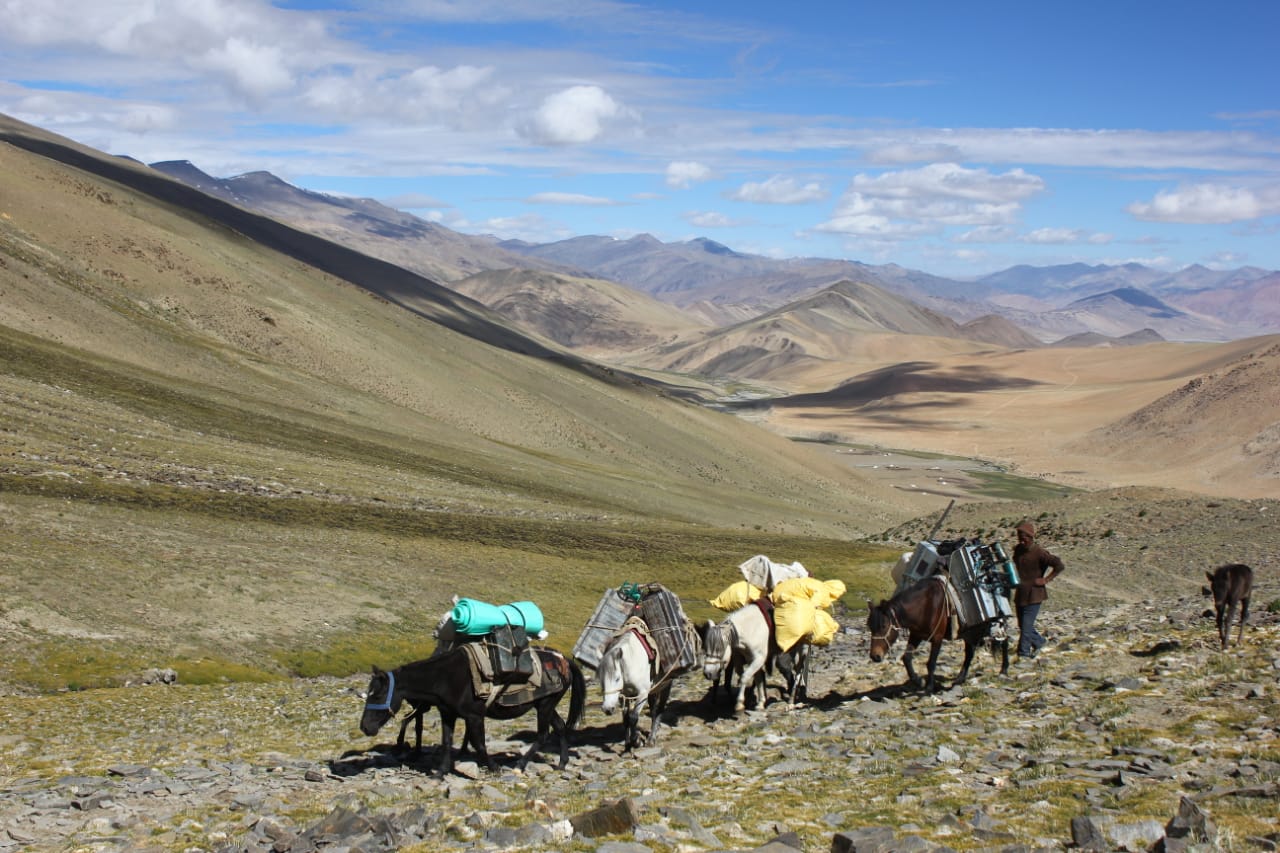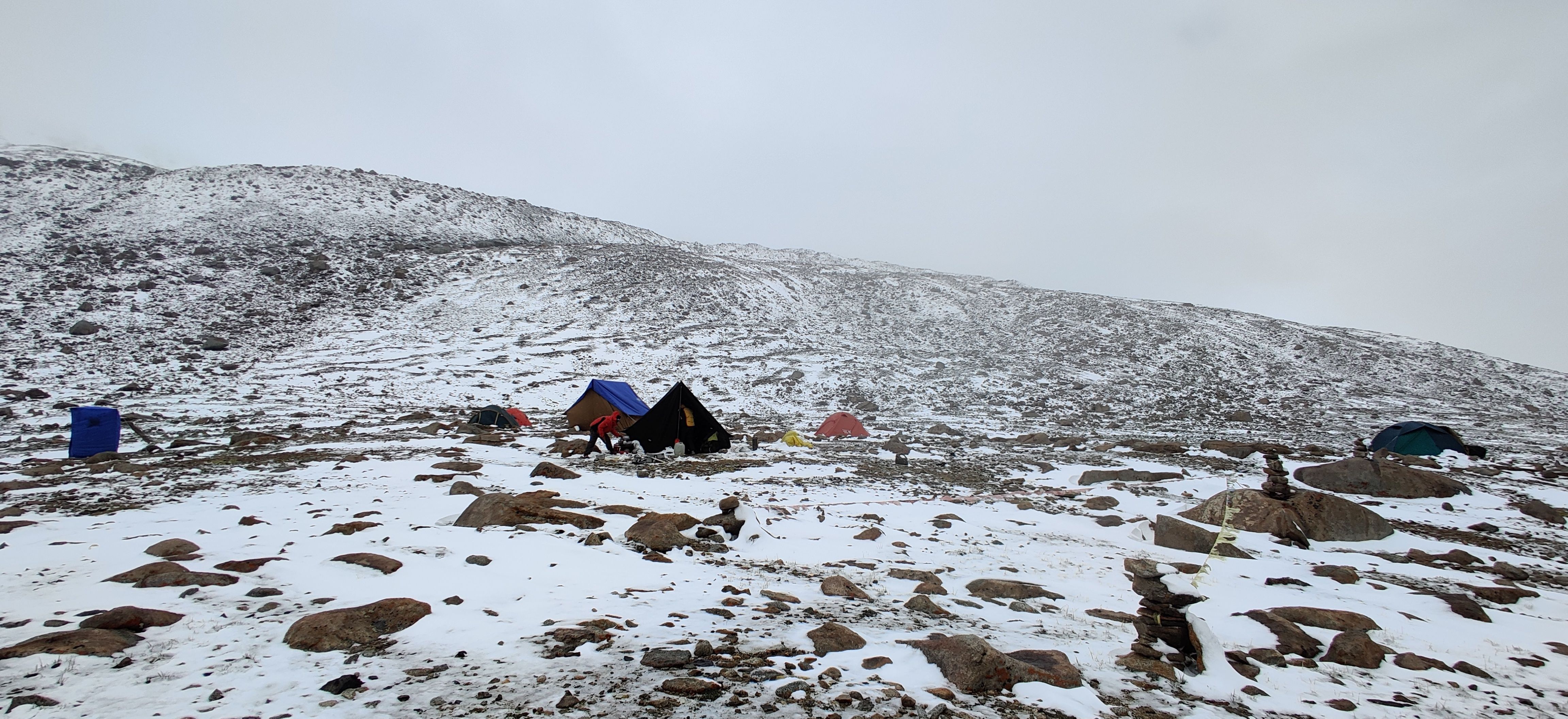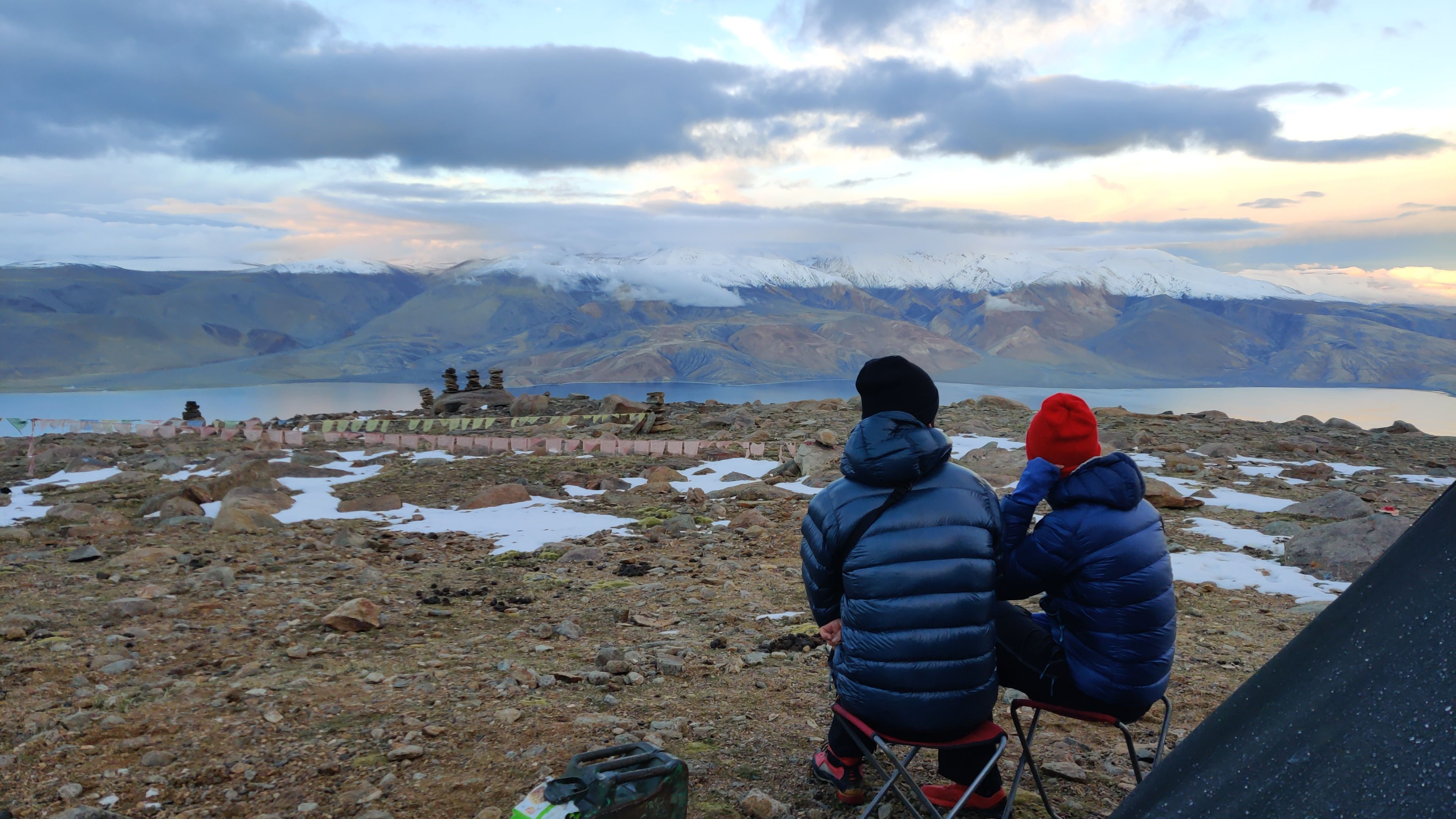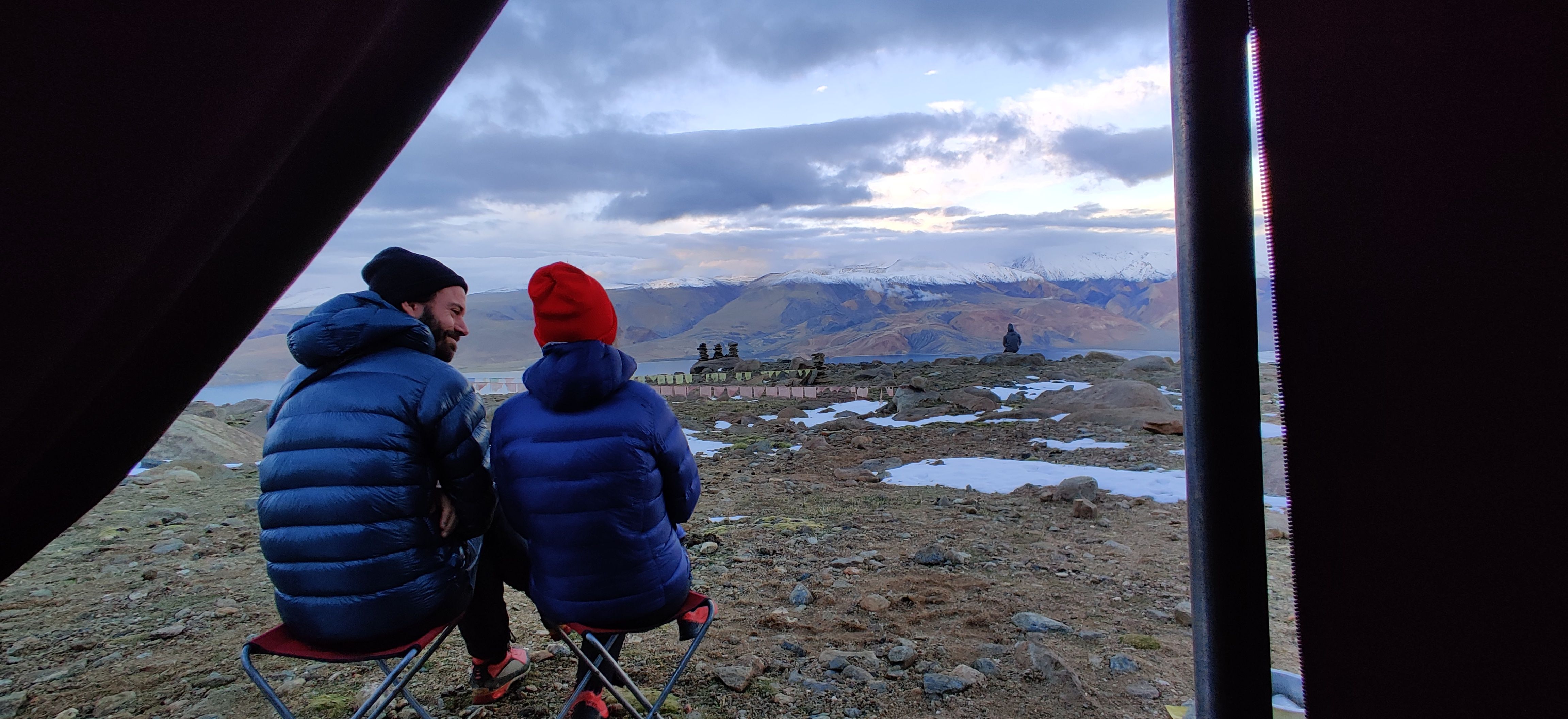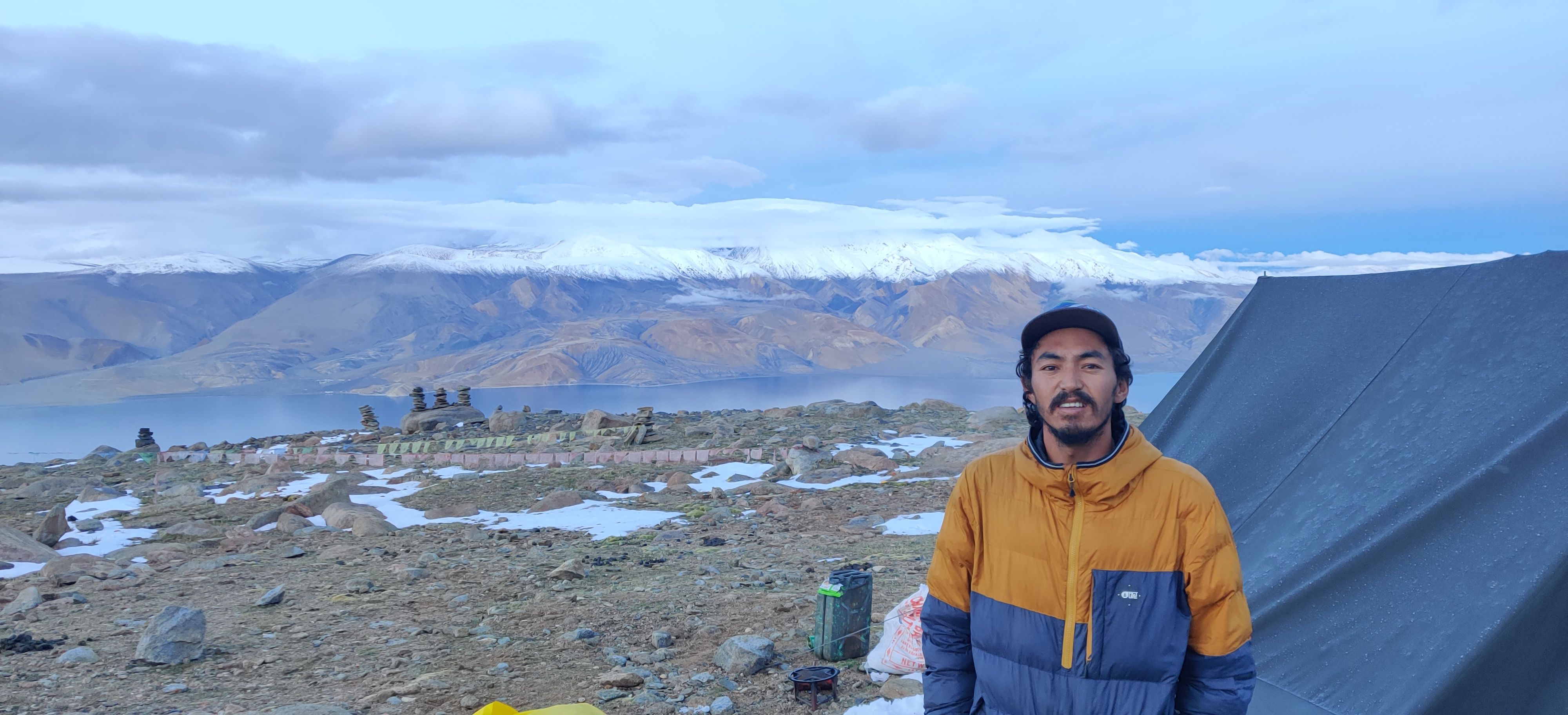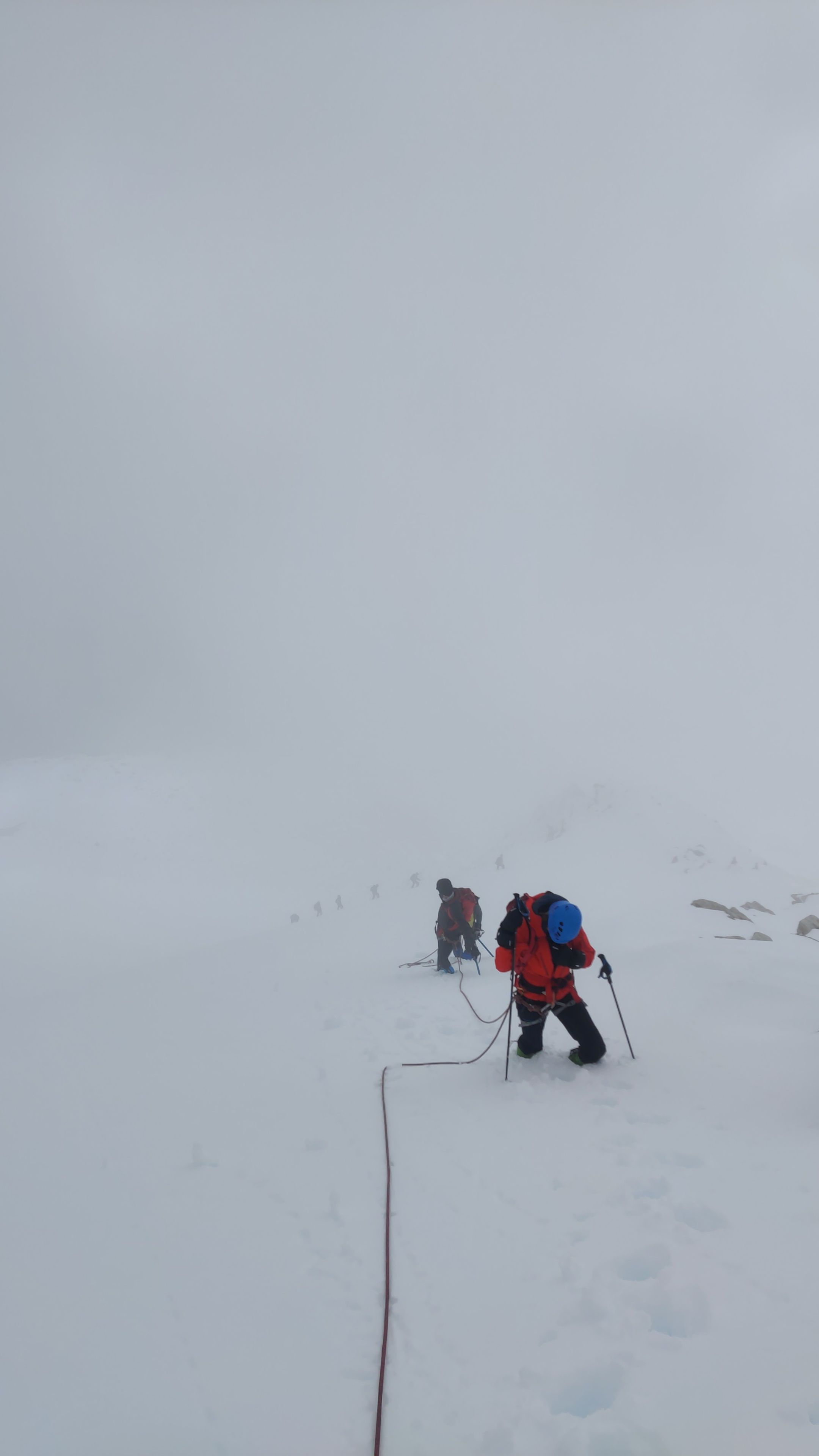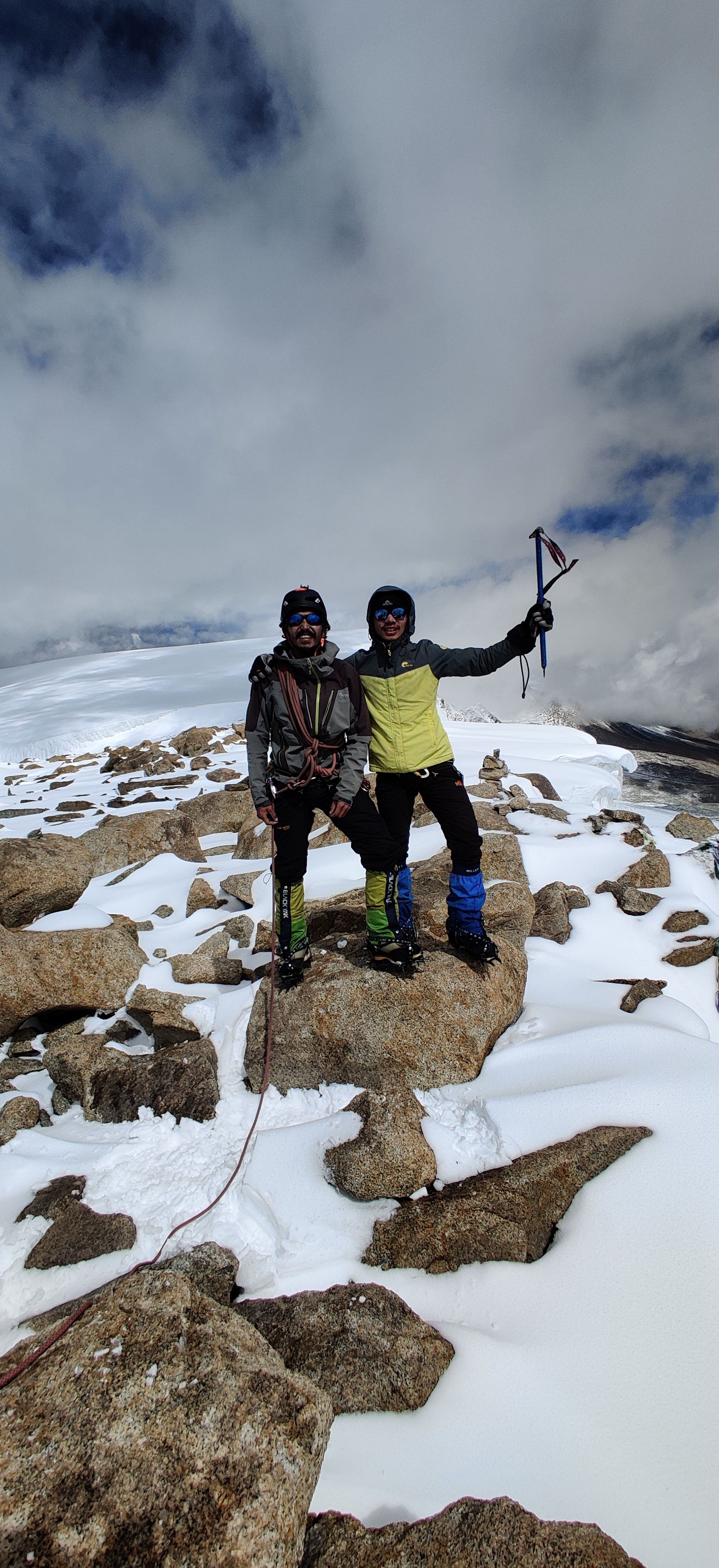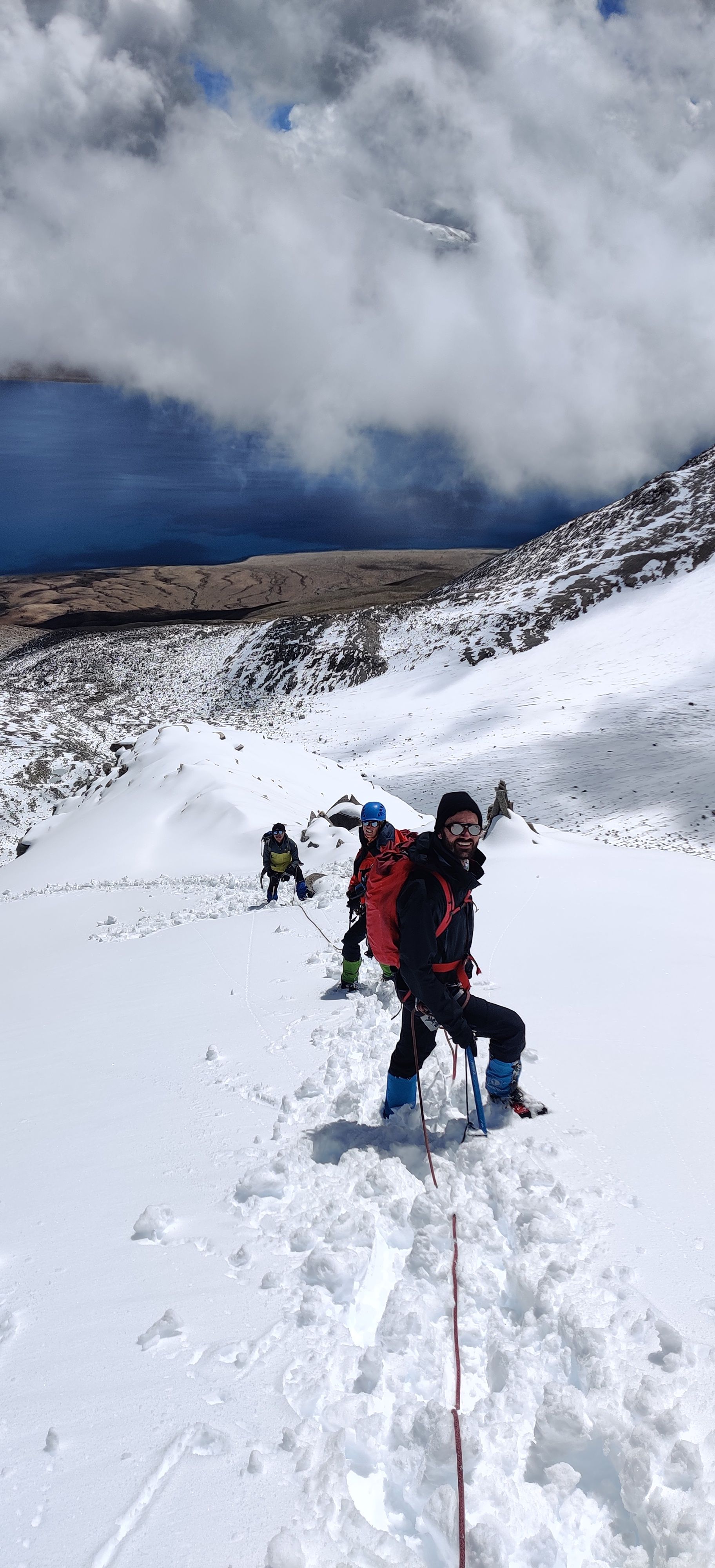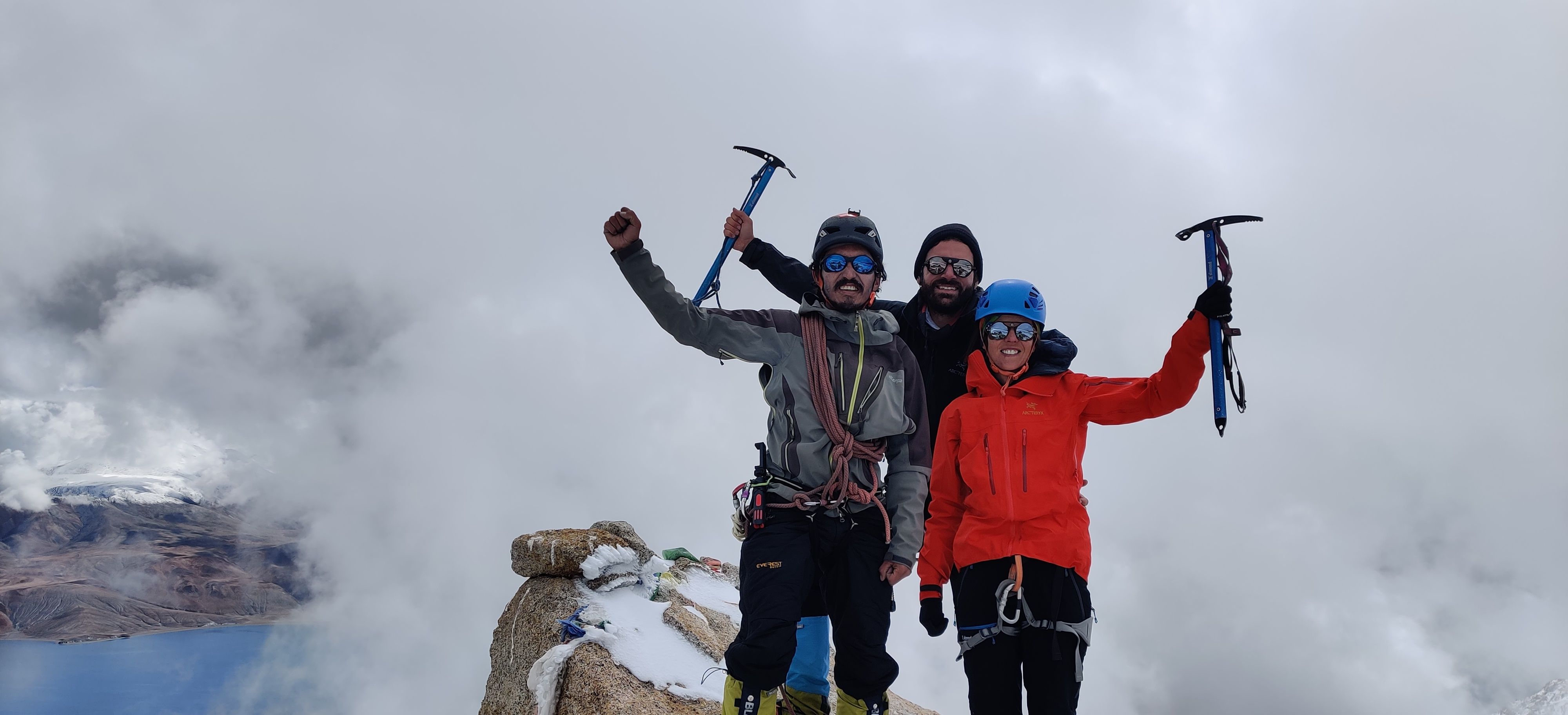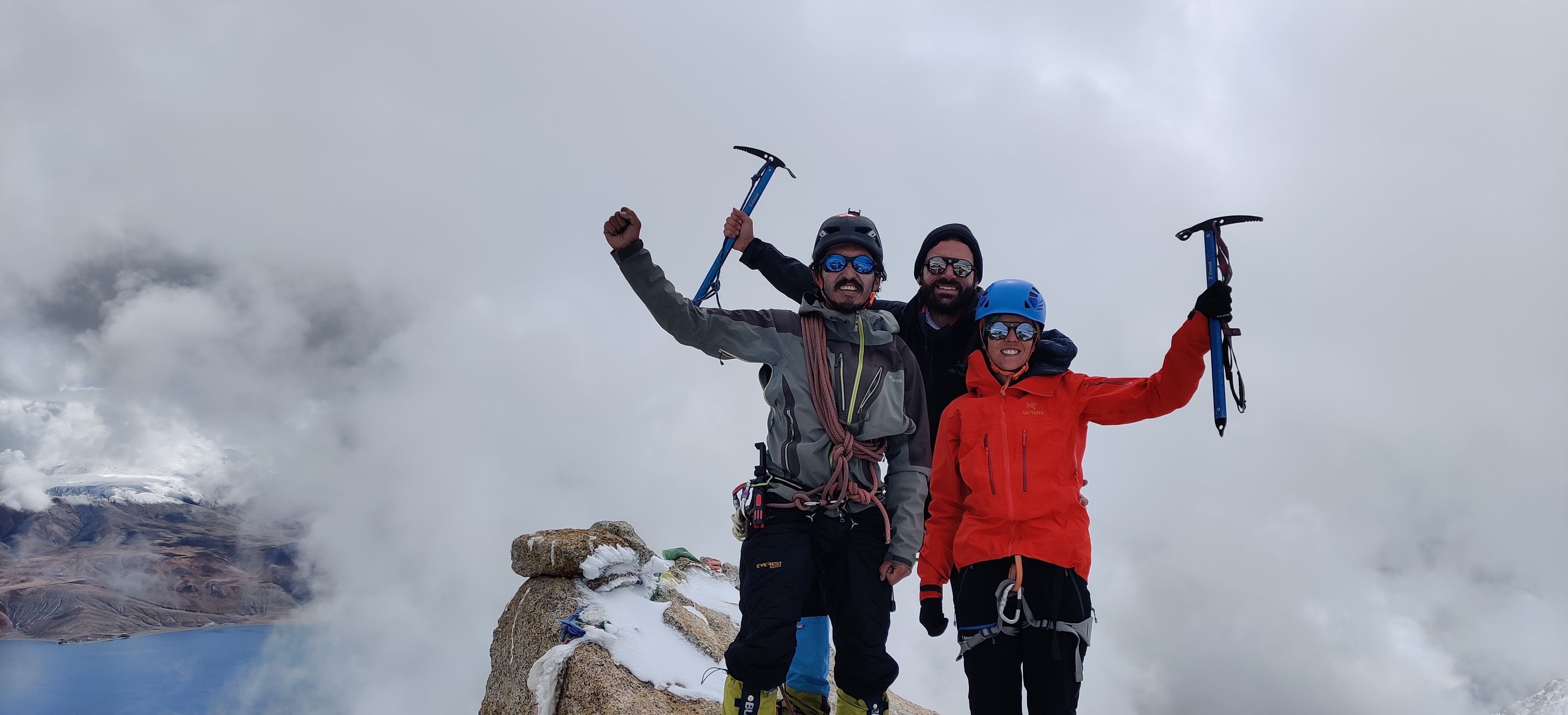Fly from Delhi to Leh (3,500m / 11,483ft), the capital of Ladakh
- The local team will meet you at the airport & assist with hotel transfer
- Spend the rest of your day at the hotel and acclimatize to the high altitude
- Overnight stay in Leh
Drive to Shey palace, Short walk to Thiksey monastery
- Visit the Shey Palace, a former royal palace of the Ladakh kings and witness the 350-year-old copper and gold statue of Buddha
- Hike up to Thiksey monastery perched on top of a hill. (Duration: 2 hours)
- Explore Thiksey monastery, find 15 a metre high statue of the Future Buddha)
- Meet the red-robed monks who live in the monastery
- Overnight in Leh
Trek to Gyamsa, Gyamsa to Shanti Stupa trek:
- Visit the remotest part of the Leh town, Gyamsa
- Trek through the pasture land of Gyamsa
- Trek will help you to bring the pace of walking for a longer duration along with acclimatisation
- Walk up to the Shanti Stupa, built by Japanese Buddhist Bhikshu
- The rest of the day will be utilised for multi-day trek preparations
- Overnight in Leh
Acclimatization at Rumtse:
- Drive towards the Eastern part of Ladakh and reach the small village of Rumtse
- The Rumtse to Tso Moriri Lake Trek starts from this village which is at a height of 4166 M.
- Spend the rest of the day exploring and going on short acclimatization walks around the village.
- Overnight in Rumtse
Trek to Kyamar; Time: 4 hrs; Distance: 10.9 km Approx,
- On the 1st day of the Rumtse Tsomoriri trek, you will be walking a distance of about 10 Km all the way up to the Kyamar valley (Jadis La) on the salt road.
- During ancient times, the salt from Tsokar Lake was transported to Leh from the Rumtse Kyamar route due to which it was named as the Salt route.
- Overnight at Kyamar (Sleeping altitude 4500 m)
Trek to Tisaling; Time: 6-7 hrs Approx, Distance: 13.5 km Approx,
- After breakfast at Kyamar, begin a gradual ascent towards Kyamar La (5.120 m), the 1st pass of the Rumtse Tsomoriri Trek followed by the Mandalchan La (5.215 m)
- From the top of the passes, you can enjoy breathtaking views of the Zanskar range and a wide panoramic view of the Changthang valley
- After crossing the pass, descend to the camping site at Pastureland of Tisaling
- During the trek you may find several nomads with their herds of livestock
- Overnight in Tisaling (Sleeping altitude: 4.900m)
Trek to Ponganagu; Time: 6 hours Approx; Distance: 14.3 km Approx,
- Cross the third pass of the Trek Shibuk La (5275 M)
- Enjoy incredible views of the surrounding mountains and the Tsokar Lake from top of the pass.
- During your descent to the valley capture amazing photographs of migratory birds and mammals.
- Overnight stay in Ponganagu near Tsokar Lake (Sleeping altitude: 4651 M)
Trek to Nuruchan, Time: 5-6 hrs Approx; Distance: 17.8 km Approx,
- Follow a dusty jeep track road along the west side of the Tso Kar lake. The Tsokar is popularly known as the white lake because of the large concentration of salt that gets deposited on its banks.
- During your trek on the salty shores of the lake, you might see folks of endangered migratory birds such as Necked black cranes and the bar-headed geese along with local wildlife residents such as Tibetan sand grouse, and brown-headed gulls to name a few.
- You will keep walking on a trail along the lake until you reach the beautiful grassy pastures and freshwater streams of Nuruchan.
- Overnight in Nuruchan (Sleeping altitude: 4679 M)
Trek to Rachungkaru (4668 M) Time: 4 - 5 hrs Approx; Distance: 11 km Approx
- After breakfast at Naru-chan, you will hike up to the Nuruchan La (4750 M) to reach the camp at Rachungkaru
- You are very likely to meet Tibetan nomadic herdsmen with their yaks, sheep and goats
- Overnight camp at Rachungkaru (Sleeping altitude: 4668 M)
Trek to GyamarTime: 7 hrs Approx; Distance: 14 km Approx
- We will cross 2 passes which are above 5000 m in altitude namely Kyamary La(5500 M) and Kartse La (5284 M)
- The views from the top of the passes will extend across the high-level landscape to the snow-capped peaks.
- Overnight stay at Gyamar (Sleeping altitude: 5157 M)
Trek to Korzok Phu: 6 hrs; Distance: 15km
- Embark on a thrilling adventure as we journey through the rugged terrain of the Himalayas, crossing over the final pass of our trip, the majestic Yalegon La, standing tall at 5,241m. On this short day of approximately six hours, we witness a spectacular sight as we descend to our campsite at Karzok Phu.
- The awe-inspiring view of the Tso-moriri lake, surrounded by barren mountains and snow-clad peaks, will leave you breathless. As we make our way down the mountain, the magnificent Mentok Kangri will greet us, standing tall and proud in all its glory.
- Prepare yourself for a challenging but rewarding two-hour descent, as we make our way down a steep 800-metre slope. After our descent, we will settle into our comfortable campsite at Karzok Phu, where we can rest and rejuvenate in the midst of nature's tranquillity.
- Overnight at Korzok Phu (Sleeping altitude: 4500 M)
Trek to Mentok Kangri II Base camp: 5-6 hrs; Distance: 8 km Approx
- Experience an invigorating hike as we ascend towards the basecamp area nestled below Mentok Kangri.
- Follow a well-defined trail that leads through an expansive valley and over gentle ridges, providing stunning views of the surrounding landscape.
- Traverse a diverse terrain, ranging from open moorlands to bouldery moraines, adding an element of adventure to our journey.
- Arrive at the campsite located at an altitude of 5300 meters, situated alongside a serene stream, offering a perfect respite amidst the awe-inspiring beauty of the Himalayas.
- Overnight stay at Mentok Kangri II basecamp (Sleeping altitude: 5300 M)
Rest and sort gear at Base Camp
- Take advantage of a well-deserved rest day at the base camp and finalize preparations for the ascent of Mentok Kangri.
- Enjoy a day to recharge and prepare for the upcoming adventure.
- Make any final adjustments to gear and equipment to ensure maximum comfort and safety.
- Take in the stunning views of the Himalayas and enjoy the camaraderie of your fellow adventurers.
- Overnight stay at Mentok Kangri I basecamp (Sleeping altitude: 5300 M)
Climb Mentok Kangri II (6270 M) and descend to Base Camp 11-12 hrs; Distance: 11 km Approx
- Embark on an exhilarating ascent of Mentok Kangri after an early start for approximately 2 hours to reach the glacier, where we will rope up and prepare for the ascent.
- Ascend the ridge on easy angled snow with occasional steeper sections, culminating in a final steepening before the summit.
- Admire the fantastic views across the lake to the peak of Lungser Kangri (6666m) and Chamser Kangri, as well as distant Tibet, weather permitting.
- Descend to basecamp via the same route, where you can relish in the sense of accomplishment and unforgettable memories of your Himalayan adventure.
- Overnight stay at Mentok Kangri I basecamp (Sleeping altitude: 5300 M)
Trek to Korzok village (5435 m); Time: 5 - 6 hrs; Distance: 11.3 km Approx.
- On the final day of the trek, cross the highest pass of the Rumtse Tsomoriri trek, the Yalung Nyau La (5435 m).
- You would see a beautiful view of the Tsomoriri Lake surrounded by high snow-capped peaks some 20 Km away from the top of the pass.
- Meet the nomads of Changthang valley as you walk to Korzok village.
- Descend on a zig-zag path to the Korzok village near the banks of the Tsomoriri Lake
- Enjoy the sunset from the banks of Tsomoriri Lake.
- Overnight in Korzok Village. (Sleeping altitude 4632 M)
Drive across Changthang plains to Leh (220 Km)
- Wake up to a beautiful sunrise at Tsomoriri.
- Set off on a 6-hour drive from Korzok to Leh via the Changthang valley.
- The drive will be bumpy till you reach the Indus River after which you will find well-tarmac roads making the final part of the journey very comfortable.
- Enjoy great views as you cross the open plains of the Changthang valley
- Overnight in Leh
Leisure day in Leh
- Early morning visit to the Shanti Stupa to watch the sunrise
- Visit the Leh Palace.
- Spend the rest of your day at leisure exploring the old Leh market and buying souvenirs
- Overnight in Leh.
Departure
- The Local team will drop you at the airport for your onward flight.
Is this mountaineering expedition for me?
Mentok Kangri is considered a difficult climb, it is recommended that you have prior experience of climbing peaks over 4,000 meters and are comfortable using technical equipment such as ice axes and crampons. If you have not done high altitude trekking before, it is recommended that you gradually build up your fitness and experience levels by doing smaller treks before attempting Mentok Kangri. It is also important to note that the climb involves steep inclines and requires a good level of physical fitness, so it is important to ensure that you are physically capable of undertaking the challenge.
Guidelines Do’s & Don'ts
- Give your body enough time to adjust to the high altitude/acclimation.
- Avoid sleeping during the day & get enough sleep at night.
- Avoid frequent smoking or drinking alcohol.
- Respect and greet the locals with Jullay (pronounced joo-lay which means Hello).
- Wear respectable outfits during your visit to sacred sites/ Monasteries.
- Kindly read the Monastery guidelines before entering a monastery.
- Ladakhi people will always be ready to help you. So, it's advisable to travel with a smile and greet Jullay.
Save the Himalayas: Follow the leave no trace policy
Majestic Ladakh proudly supports the ‘Leave no trace policy’ for our majestic Himalayas. We request you to follow the below guidelines and help us in preserving the splendid natural beauty of our country:
- Carry personal water bottles throughout the tour as locals will be always happy to provide water to refill & basically free of cost at restaurants and hotels.
- Advisable to carry a water bottle with a filter as you can refill it while travelling to any part of Ladakh.
- DZOMSA stalls are also available for refilling water bottles at just ₹7 per litre.
- Use reusable shopping bags in Leh market as plastics are totally banned in Ladakh as they are harmful to our environment.
- Do not litter. Bring back your own trash.
- Let nature’s sounds prevail; avoid loud voices and noises.
Safety during the Expedition:
- The Equipment used during the expedition is UIAA certified.
- Our Expedition Leaders are advanced mountaineering course qualified and are trained in rescue procedures from leading mountaineering institutes and certified first-aid responders.
- Local guides who will accompany the group are certified first-aid responders and the support staff are trained in 1st Aid.
- The expedition team carries Oxygen cylinders which can be used if any medical emergency arises.
Recommended stay & food options available
- During the Mentok Kangri II expedition, you will be staying in Moving camps.
- On a full service moving camps the support staff erects and dismantles the tents at different places selected for an overnight stay. Apart from the basic facilities such as hot water to drink, the staff also carries oxygen cylinders in case of a medical emergency at high altitudes. As the camp does not carry drinking water you will be camping close to the river/ stream where fresh running water is available for cooking.
- There will be toilet, shower and dining tent
- Stay in Leh and other cities:- Twin sharing rooms are provided.
- Single rooms can be requested for a supplement and is subject to availability
In a moving camp the breakfast, lunch and dinner will be prepared by the cook travelling with the group. Meals options are mentioned below:
● Breakfast - porridge, cereals, eggs and toast with plenty of tea, coffee or hot chocolate
● Lunch - a picnic lunch with soup, various kinds of local breads, cheese, eggs, tinned
fish, meat and fruit as per the availability.
● Afternoon snack - tea and biscuits on arrival at camp
● Dinner - usually soup, pasta, rice or potato-based main course with fresh vegetables, followed by dessert, tea, coffee or hot chocolate.
Weather in Ladakh
Generally the weather is good in Ladakh during the Summer, with warm to very hot sunny days (temperatures can reach up to 30ºC/35ºC), and cool to cold nights depending on the altitude.
- There is, however, always the possibility of rain, and snow at higher altitudes, and you should be prepared for this. Ladakh, though technically part of the Tibetan Plateau and classified as a high altitude desert, can and does occasionally experience the effects of the Indian monsoon.
What is AMS?
Acute mountain sickness (AMS), is the negative health effect of high altitude, caused by rapid exposure to low amounts of oxygen at high elevation. Symptoms may include headaches, vomiting, tiredness, trouble sleeping, and dizziness.
How to avoid AMS?
- Give your body enough time to adjust to the high altitude/acclimation
- Get enough sleep and eat healthy food
- Avoid smoking or drinking alcohol
If you suffer from any respiratory or health-related issues, please let the tour guide know before the start of the tour.
How is the mobile connectivity in Ladakh?
Only Jammu & Kashmir and Ladakh registered pre-paid sims are serviceable in Ladakh. The following services providers/services are active in Ladakh:
- Airtel: Postpaid service
- Jio: Postpaid & pre on post-service
- BSNL: Postpaid service
You can buy and activate a new sim in Leh.
What things should I carry for the trip?
Following are the list of essentials that you should carry:
Base Layers:
- Lightweight Underwear (3-4 pairs)
Mid Layers:
- Soft Shell Jacket (to be worn over other layers)
- Soft Shell Pants (breathable and water-repellant)
- Lightweight Nylon Pants (1-2 pairs)
Windproof/Rain Layers:
- Hard Shell Jacket with hoodie (waterproof and breathable)
- Hard Shell Pants (waterproof and breathable)
Insulation Layers:
- Heavyweight Insulated Down Jacket with hoodie
- Insulated Pants
Headwear:
- Warm Hat (synthetic or wool)
- Balaclava (for protection in high winds)
- Baseball Cap or other sun hat
- Bandana or Buff (to protect neck/face from sun)
Eyewear:
- Glacier Glasses (full protection)
- Ski Goggles (for high winds)
Gloves:
- Lightweight Synthetic Liner Gloves
- Soft Shell Gloves
- Shell Glove with Insulated Liner
- Expedition Mitts
Footwear:
- Liner Socks (3-4pairs)
- Wool or Synthetic Socks (3-4pairs)
- Mountaineering Boots (double layer recommended) G2SM La Sportiva boots
- Hiking Shoes/Boots
- Camp Boots (optional)
- Gaiters (optional)
Sleeping Equipment:
- Sleeping Bag (rated to at least -20°F)
- Earplugs
Mountaineering Gear:
- Trash Compactor Bags
- Backpack Rain Cover (optional)
- Trekking Backpack minimum 45 litre
- Trekking Poles (optional)
- Ice Axe (short, max 60cm) (optional)
- Crampons (optional)
- Climbing Helmet (optional)
- Accessory Cord
- Alpine Climbing Harness (optional)
- Carabiners
- Belay/Rappel Device
- Headlamp
Travel Items:
- Large Duffel Bag with Lock
- Carry-on Backpack (optional)
- Travel Clothes
- Lightweight journal, sketchbook, pencils, pen (all optional)
- cash
- Additional Food Items
Other Equipment:
- Water Bottles (2 or 3)
- Water Treatment
- Thermos-1
- Hand/Foot Warmers (optional)
- Sunscreen
- Lip Screen (2 sticks)
- Toiletry Bag
- Pee Bottle
- Female Urination Device (FUD)
- Knife or Multi-tool (optional)
- Small Personal First-aid Kit
- Medications and Prescriptions
- Handkerchiefs/Bandanas (optional)
How are the restaurants in Leh?
You can find plenty of restaurants in Leh serving Ladakhi, Indian, Kashmiri, Tibetan, Korean, Italian and continental food. There are always plenty of choices for both vegetarians and meat-eaters. Please keep about £70-100 (US $110-160) for food.
Do try the Ladakhi cuisine like vegetable momos or thukpa during your time in Leh!

